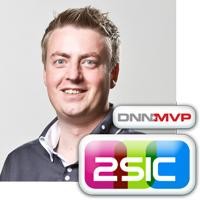Schedule
| 7:45 AM ET | Sponsors | Kickoff | |
| 8:00 AM ET | Shriram Sankaran | Turn Data into Charts with AI & the Syncfusion Toolkit for .NET MAUI | Watch |
| 9:00 AM ET | Daniel Mettler | Create Magical Websites with Oqtane CMS | Watch |
| 10:00 AM ET | Jimmy Engström | Mastering the Blazor Render Modes | Watch |
| 11:00 AM ET | Egil Hansen / Steven Giesel | Best practices unit testing Blazor components with bUnit | Watch |
| 12:00 PM ET | Michael Washington | Your own Personal Data Warehouse | Watch |
| 1:00 PM ET | Allen Conway | Zero to Blazor Apps with GitHub Copilot | Watch |
| 2:00 PM ET | Maddy Montaquila | Intro to .NET Aspire - Modern app development doesn't have to be painful | Watch |
| 3:00 PM ET | Daniel Roth | The future of web development with ASP.NET Core & Blazor | Watch |
| 4:00 PM ET | Beth Massi | Build hybrid apps with .NET MAUI | Watch |
| 5:00 PM ET | Shaun Walker | Build It Beautiful With Blazor | Watch |
| 6:00 PM ET | Sponsors | Wrap-up |
Speakers
Some amazing speakers from Microsoft and the .NET Community will be sharing their experiences with Blazor, .NET MAUI, and Oqtane.

Shriram Sankaran
8:00 - 9:00 AM ET
Turn Data into Charts with AI & the Syncfusion Toolkit for .NET MAUI
In this session, we'll explore how to harness the power of AI to generate dynamic and interactive charts using the Syncfusion Toolkit for .NET MAUI. We'll demonstrate how to integrate AI capabilities and create visually appealing charts that can enhance data visualization in your applications. Whether you're a beginner or an experienced developer, this session will equip you with the knowledge to leverage the latest technologies in your projects. Get ready to transform how you present data!
Shriram Sankaran is a Senior Product Manager at Syncfusion with over 11 years of experience in developing and managing applications using cutting-edge technologies. He began his career as a full-stack developer at Syncfusion and has since played a key role in delivering real-time solutions to customers, addressing business challenges, and driving product development. Based in Chennai, India, he enjoys movies, traveling, and exploring different cuisines.

Daniel Mettler
9:00 - 10:00 AM ET
Create Magical Websites with Oqtane CMS
Leverage the latest Blazor Open-Source to create an amazing looking web site with blogs, galleries, animations, online forms - all in less than 60 minutes. We will be using the latest technologies, best-practices and AI to customize the look and feel (Theme), while leveraging the Oqtane CMS plugin 2sxc which powers more than 100k web sites.
With this knowledge, you can use Oqtane as a CMS for standalone web sites or to augment your Blazor applications with SEO content to market or document your solutions.
Daniel Mettler grew up in the jungles of Indonesia and is founder and CEO of 2sic internet solutions in Switzerland and Liechtenstein, a web specialist which has delivered over 800 projects since 1999. He is also chief architect of 2sxc, an open source module for creating attractive content and apps. Daniel is a member of the Oqtane Core Team.

Jimmy Engström
10:00 - 11:00 AM ET
Mastering the Blazor Render Modes
Blazor took a huge leap forward with .NET 8. With the new render modes, we no longer have to choose between Blazor Server or Blazor WebAssembly. We even got Server-Side Rendering! With a mix of all these render modes, there are endless possibilities.
We will also tale a look at how we can combine the new things in .NET9 with the render modes to get a better user experience.
Blazor is the (not so) new Web UI Framework from Microsoft. It empowers us to build interactive web applications using our existing C# knowledge. In this session, Jimmy will talk about what Blazor is, how the new render modes work, and how they can improve your Blazor apps.
Jimmy will also share his experience of running Blazor in production since 2019, offering practical tips and tricks to streamline your development process.
This session is perfect for anyone looking to get the most out of Blazor, whether you're a newcomer or a seasoned developer. Join us to learn, share, and get inspired by the endless possibilities of Blazor!
Jimmy Engström has a longstanding passion for technology that ignited at age 7 and evolved into a professional commitment to utilizing innovative technologies like Blazor to enhance user experiences. Being an early adopter of Blazor, even during its beta stage, and authoring "Web Development with Blazor," reflects his proactive engagement with cutting-edge tools to develop solutions that simplify daily tasks. Through his book, the Coding After Work podcast, and as a 10X recipient of the Microsoft Most Valuable Professional award, he continually strives to drive efficiency and ease-of-use in application development.

Egil Hansen

Steven Giesel
11:00 - 12:00 AM ET
Best practices unit testing Blazor components with bUnit
Why create tests of UI components? Isn’t UI tests inherently brittle, run slowly, and hard to maintain?
The answer is no, at least not with bUnit. bUnit is a testing library built to make writing tests for Blazor components feel like writing tests for plain old C# objects (POCOs), which means a lot of the good practices we know from unit testing carries over, as well as the benefits.
This presentation will give a brief introduction to bUnit and then dive into some of the best practices for writing components tests, tests which results in both stable and maintainable test suites as well as maintainable Blazor components.
Egil Hansen is an experienced software developer/architect, international speaker, and Microsoft MVP for developer technologies, with a strong focus on creating maintainable software that solves real business problems in the cloud and on-prem, using techniques and practices such as domain-driven design, test-driven development, and following clean-code principles. Egil is also the creator and maintainer of bUnit, an open-source library for testing Blazor components, and AngleSharp.Diffing, a library for semantic comparison of HTML in C#. Egil has worked with many technology stacks and architectural patterns throughout his career. He is now primarily focused on the .NET ecosystem, including backend and front-end technologies, and developing solutions running in the cloud. As an experienced .NET Engineer and a Microsoft MVP in Developer Technologies in the heart of Zurich, Steven Giesel brings a substantial breadth of knowledge and expertise to each project.
Steven Giesel's enthusiasm for technology goes beyond his professional endeavors – he actively maintains various open-source libraries (for example, as co-maintainer for bUnit – a unit testing library for Blazor) and frequently speaks at user groups and conferences. Furthermore, he has authored concise e-Books on .NET-related topics and peer-reviewed a book focused on building applications with Blazor WebAssembly.

Michael Washington
12:00 - 1:00 PM ET
Your own Personal Data Warehouse
Typically, a data warehouse operates in the cloud. When you access your data—even just to view it—you incur compute costs (in other words, you pay). But you already have a computer with a CPU and memory capable of handling most tasks. Wouldn’t it be great to view, edit, transform, and report your data right on your own machine? Now you can!
In this session, we’ll explore how this free open-source Blazor Hybrid-powered desktop app empowers you to create a personal data warehouse using familiar tools. Import data from Excel, CSV, SQL Server, or Microsoft Fabric; apply AI-driven transformations; and export your results—all without incurring cloud compute costs. You can even create Microsoft SSRS reports, using report builder, against your live data.
Michael Washington is an .NET C# programmer. He has extensive knowledge in process improvement, billing systems, and student information systems. He is a Microsoft MVP and a member of the Oqtane Core Team. He has a son, Zachary and resides in Los Angeles with his wife Valerie.

Allen Conway
1:00 - 2:00 PM ET
Zero to Blazor Apps with GitHub Copilot
The next evolution in software development is here with the aid of artificial intelligence and GitHub Copilot. Supercharging our IDEs providing developers with the ability to code more quickly and with greater ease, explain code, stay in the flow, and focus on more important tasks are just a few of the benefits of integrating this revolutionary toolset into our daily workflows.
In this session, we’ll focus on building a functional Blazor application from scratch using GitHub Copilot within Visual Studio. You’ll see how Copilot assists with scaffolding components, generating and optimizing code, creating unit tests, and navigating common Blazor development tasks with speed and clarity. Along the way, you'll learn prompt engineering techniques, when to leverage ask vs agent modes, and how to incorporate Copilot naturally into your day-to-day Blazor work. Whether you're new to Copilot or looking to level up your .NET skills, this session will give you the practical tools and examples to start using AI effectively in your Blazor development workflow.
Allen Conway is a Microsoft MVP, technology leader and Principal Consultant for Xebia (xebia.com) with over 20 years of experience that is an advocate of web, cloud, and Microsoft .NET technologies both professionally and personally. He enjoys the challenge and creativity behind software engineering, and hopes to give back to others in the community through public speaking, YouTube (@TheEclecticDev), and on his blog (allenconway.net).

Maddy Montaquila
2:00 - 3:00 PM ET
Intro to .NET Aspire - Modern app development doesn't have to be painful
Explore the groundbreaking .NET Aspire technology stack, designed to streamline development of today's cloud apps. We'll start from the basics - what even is Aspire?! - and then dive into how it decreases onboarding time, provides deep app insights during development, and bootstraps deployments without locking you into any specific language or cloud. Join Maddy Montaquila, Product Lead for .NET Aspire at Microsoft, to learn how "Aspirifying" your app gets developers back to developing again!
Maddy Montaquila (formerly Leger) is a Senior Product Manager at Microsoft and the product lead for Aspire. She’s been building dev tools at Microsoft since 2018, working across the .NET mobile stack and helping bring .NET MAUI to life. Maddy has been obsessed with making developers’ lives easier ever since her first dev tools internship, where she realized it perfectly combined her tech background with her passion for product development.
These days, she’s focused on making modern distributed app development suck a whole lot less. Maddy’s an experienced speaker who’s presented everywhere from local user groups to major keynotes, known for bringing great energy and a genuine love for dev tools to every talk

Daniel Roth
3:00 - 4:00 PM ET
The future of web development with ASP.NET Core & Blazor�
Explore the future of web development with ASP.NET Core & Blazor in .NET 10, including major improvements for security, observability & diagnostics, performance, and productivity. We’ll look at the new support for Blazor state persistence, new Blazor diagnostics, startup performance improvements, validation for minimal APIs & Blazor, OpeWebAuthn & Passkey support, enhanced authentication tooling, and much more!�
Daniel Roth is the Principal Product Manager for ASP.NET Core & Blazor at Microsoft.

Beth Massi
4:00 - 5:00 PM ET
Build hybrid apps with .NET MAUI
In this session learn why you would choose a hybrid web approach to building native apps with .NET MAUI. Learn about Blazor hybrid and how you can build full-featured native apps for Windows, Mac, iOS and Android within a single codebase that can take advantage of your web skills. Take a tour of the Blazor hybrid tools and templates and see how you can reuse UI to build solutions that target the web at the same time. We'll also take a look at the HybridWebView control and show how you can leverage other web frameworks with .NET MAUI�.
Beth is a Product Manager on the .NET MAUI team at Microsoft and responsible for making native device and hybrid web development in Visual Studio a delightful experience. Formerly the Marketing Director and Community Manager for .NET as well as serving on the Board of Directors for the .NET Foundation, she’s spent her career helping .NET developers be successful.

Shaun Walker
5:00 - 6:00 PM ET
Build It Beautiful With Blazor!
Over the past 5 years Blazor has been a popular choice for building interactive web applications on the .NET platform. The ability to develop full stack web applications using C# rather JavaScript has been a significant benefit for software developers. However, when it comes to creating beautiful websites, you really need to embrace the pillars of modern web design which include HTML, CSS… and JavaScript. The lack of a simple integration story for JavaScript in Blazor resulted in very few public websites which exemplify modern web design characteristics and behavior.
.NET 8 was a game changer for Blazor, as it introduced a new Static Server-Side Rendering (SSR) capability. SSR allows Blazor to leverage the performance and efficiency of server-side rendering and makes JavaScript a first-class citizen once again. In this presentation we will demonstrate the amazing new capabilities of Blazor in .NET 8 and how they can be used to build beautiful modern websites.
Shaun Walker is the original creator of Oqtane and DotNetNuke (DNN), web application frameworks which have earned the recognition of being amongst the most pioneering and widely adopted Open Source projects native to the Microsoft platform. He has 30+ years professional experience in architecting and implementing enterprise software solutions for private and public organizations. Based on his significant community contributions he has been recognized as a Microsoft Most Valuable Professional (MVP) for over 16 years. He was recognized in 2011 as a leading entrepreneur in the BIV Forty Under 40 business awards, and is currently the Chair of the Project Committee for the .NET Foundation.


